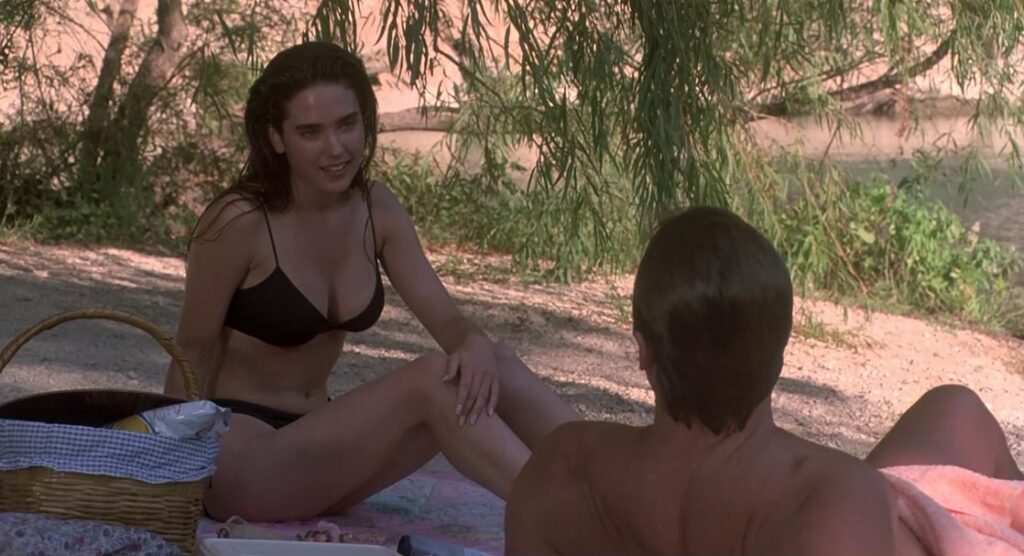
Just about every ten years Dennis Hopper made one genuine masterpiece. First there was the formally avant-garde The Last Movie (1971), followed by the gritty drama Out Of The Blue (1980) and then there’s The Hot Spot (1990). The Hot Spot came out at about the same time as Backtrack (1990); another genre exercise that Hopper disowned. The problem with Backtrack is that it couldn’t position itself in any particular genre tradition. It’s a post-modern deconstruction of too many kinds of films all at once. By contrast The Hot Spot is hyper focused on the milieu of Film Noir and the pulpy crime novels of the fifties.
The plot of The Hot Spot, based on the novel Hell Hath No Fury by Charles Williams, is a boiler plate example of pulp fiction. Hopper’s shooting script was originally written by Charles Williams roughly thirty years earlier and is completely ensconced in the aesthetics of the time which contributes immensely to the atmosphere of vintage paperbacks. What Hopper added to Williams’ vision of a film for Robert Mitchum was sweat, sex, and lots of dramatic space.
Dramatic space comes from the slowing down of the action; pausing narrative momentum so that actors can live as their characters. Suddenly a boiler plate pseudo Film Noir opens up and characters who would normally be little more than plot devices or signifiers take on an existence entirely their own. It’s a subtly subversive tactic that really pays off for Hopper. There’s a balance of naturalism and Noirish stylization in The Hot Spot that made it the freshest manifestation of its genre since Robert Altman’s The Long Goodbye (1973).
As an actor Dennis Hopper understood the value of process; the steps a character must take, on or off screen, to accomplish their goals. In directing The Hot Spot Hopper privileges these processes, most notably the tedium of the bank robbery. The bulk of the run time of The Hot Spot is eaten up by characters in silence observing one another and/or the processes by which these characters execute their schemes.
And these are classic Film Noir schemes too. On the one hand there’s the drifter turned car salesman, Harry Madox (Don Johnson), who robs a bank and sets his romantic sights on the wholesome nineteen year old secretary Gloria Harper (Jennifer Connelly). While on the other hand there’s the Machiavellian femme fatale, Dolly Harshaw (Virginia Madsen), who can exploit every angle and turn Madox into her puppet all for her own personal gain. Williams’ plotting is impeccable and Hopper respects it as the backbone to his unique approach.
However what’s truly unique about The Hot Spot are Hopper’s formally brilliant shot compositions. Unlike the rough and tumble images of Out Of The Blue and Easy Rider (1969) or the New Wave inspired The Last Movie, the visuals in The Hot Spot are mature, thought out and almost painterly. Cinematographer Ueli Steiger and Hopper capture both the dry heat and poverty of rural Texas while never compromising the Edward Hopper sensibility that has come to be associated with gritty Film Noir pictures.
The Hot Spot is a film that really deserves a popular rediscovery. As a Neo-Noir The Hot Spot is, in my estimation, a superior film to any that the Cohen Brothers or Lawrence Kasdan ever made in the genre. It’s a film that is boldly subversive of its genre without ever discrediting it.
